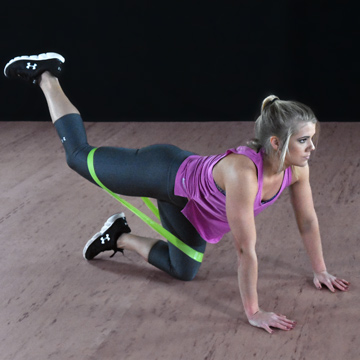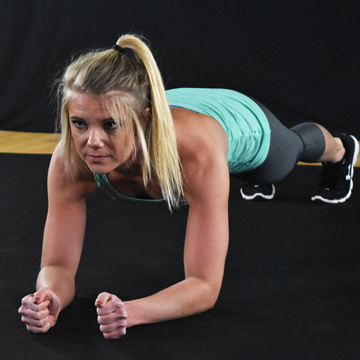Gym Flooring Material Types
Related Product: Rubber Flooring Rolls Geneva 1/2 Inch Black Per SF
Each material has its benefits, whether you're looking for something for fatigue relief, impact absorption, scuff resistance, something that won't absorb moisture, color choices, or even insulative properties.
Here we'll discuss the properties of each gym flooring material and what it is and isn't good for.
Rubber Gym Flooring

The most popular material for weight rooms and areas where equipment such as treadmills or weight machines will be utilized is rubber. It is relatively inexpensive, very durable, and fairly easy to install. Rubber provides a durable and long-lasting surface underneath heavy weight equipment and exercise machines. For an application where you will have equipment, you may want to consider a plastic option or plyometric rubber, both of which provide more fatigue relief.
Foam Gym Flooring

The most popular material for aerobic and cardio facilities, foam provides excellent fatigue relief for athletes. It is also the material of choice for most MMA and other martial arts and gymnastics facilities. It is soft to lay on and non-absorbent, so it will not soak up moisture and hold it. However, foam is susceptible to indentations from heavy equipment such as weights and treadmills. These indentations can be permanent. For this reason, it is not popular for those applications unless it is a super high-density EVA foam material. These will still show some indents but are designed to handle heavy equipment and weights much better than other foam flooring.
PVC Plastic Gym Flooring

Probably the most versatile of our gym flooring options, flexible PVC plastic can be used for fatigue relief as well as to protect your subfloor from weights and equipment. PVC plastic flooring that is designed for workout areas is soft and pliable like rubber but non-absorbent like foam. Unlike both foam and rubber, it can be used on top of carpeting without risk of the tiles separating or sinking into the pile.
Polypropylene Gym Flooring

Another form of plastic gym flooring is polypropylene tiles. Much more rigid than its PVC counterpart, these tiles are designed to be used as athletic courts or multipurpose aerobic flooring surfaces. They can also have a vinyl top that mimics hardwood or stone. Generally, it is a good idea to have a rubber underlayment under this type of gym flooring, but sometimes you can even install it over low-pile carpet.
Carpet Gym Flooring

Interlocking carpet tiles with padding can be a great option in a basement floor that does not have any moisture issues and where dual-purpose flooring is desired. Carpet tiles can offer a warm and comfortable flooring surface, while the padded backing will offer some fatigue relief and cushion.
There are also commercial gym carpet tiles that are a bit more rigid or rugged. These will hold up much better in a weight room environment than other carpet tiles.
If impact absorption is the primary concern, you may even want to try roll-out carpet-topped mats, which are commonly used in cheerleading, gymnastics, and martial arts gyms.
Athletic carpet is almost always bonded to foam or bitumen for cushion and/or durability.
There is also rubber gym flooring that is blended with cork for its sustainability and fatigue relief properties.
Which Gym Floor Is Right For You















